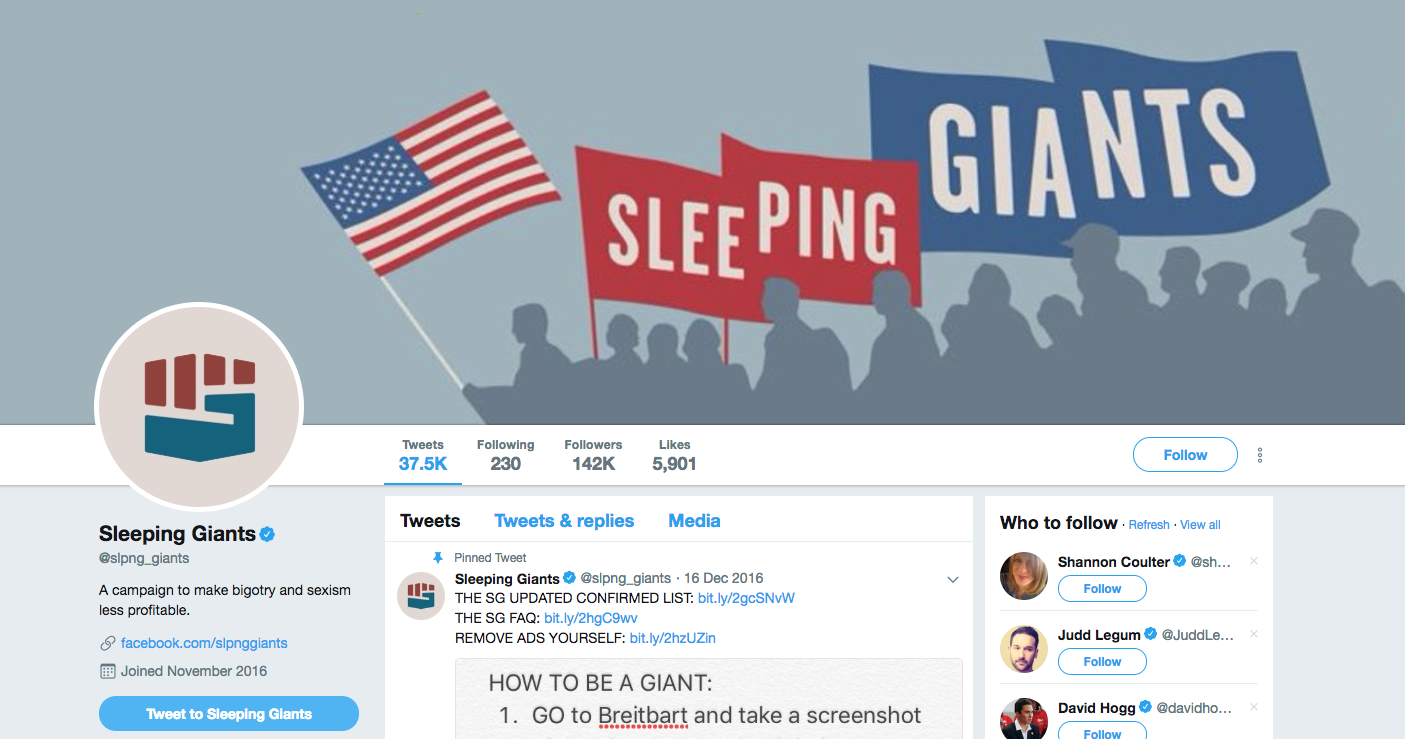How advertisers’ fears over brand safety could be a boon for traditional publishers
Shortly after Donald Trump won the US election, an anonymous Twitter profile entitled Sleeping Giants appeared online encouraging ordinary people to call out companies that advertised on aggressive right-wing websites.
The theory was that those businesses were funding “fake news” that some say led to the Republican win. All users had to do, the account explained, was take a screenshot of the ad, tweet the business “politely” asking them to remove it and then let @slpng_giants know when the brand responded. Its first target was a student loan company in San Francisco that popped up on alt-right publisher Breitbart, but today 3,800 businesses have complied with requests to remove ads, including Audi, BMW, Visa and – incredibly, as of last month – even Mumbrella.


